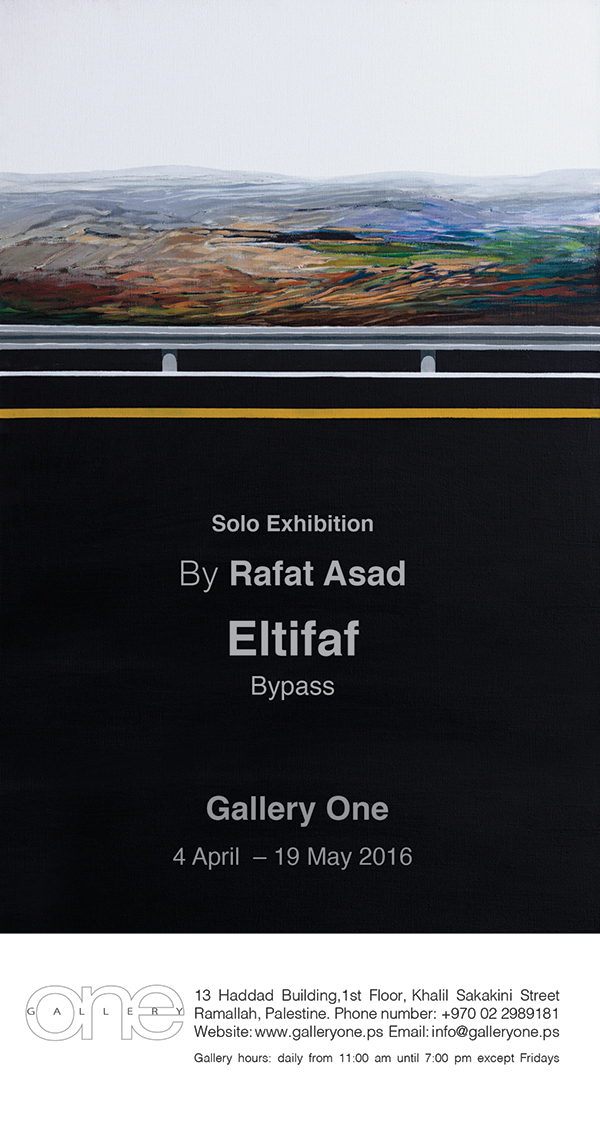Rafat Asad
Gallery One
By: Hadeel Karkar
………………………
Following his exhibition “Marj ibn Amer,” Asad embarks on another endeavor in drawing the Palestinian landscape, this time, from the perspective of a driver making the trip on the bypass road between Nablus and Ramallah. Similar to “Marj ibn Amer,” “Iltefaaf” reiterates familiar concerns regarding inaccessibility to Palestinian land and ways to bypass domineering physical inhibitions by visual and virtual possibilities. The drawings, to that effect, challenge inhibitions such as the function of the barriers on the sides of the roads that separate the passers-by from the surrounding territory that has been confiscated by the Israeli occupation and marked as a forbidden zone for Palestinians.
Asad, who has been extolled for perfecting the three-dimensional technique in previous works, adds in this exhibition yet a fourth dimension to his drawings. The fourth dimension is manifest in the force of speed instigated by sentiments of fear and frustration. In spite of the forceful movement of speed captured visually in the works, the scene is dominated in most images by prevailing black silhouettes. The use of the color black is relatively amplified in order to depict its domineering effacing presence on the magnificent and tender part of the scenery. The juxtaposition reveals the unfair advantage of the density of blackness manifest in billboards, street margins, and electric poles, whose creeping movement into the vivid natural scenery contributes to its erosion.
Although Asad’s previous works have been likened to Vincent van Gogh’s landscape paintings, he now refrains from elaborating on the expansive site of nature and instead emphasizes the black blocks and strangling fears and anxiety that result from the inability to reach the desired destination due to random and sudden assaults on the road. A haunting experience that chases him every time he takes the bypass road.
Gallery One in Ramallah (across from Sakakini Cultural Center) is open daily, except Friday, from 11 a.m. to 7 p.m. The exhibition runs from Monday, April 4 to Thursday, May 19, 2016.
» Hadeel Karkar is a PhD candidate in comparative literature at University of Sorbonne-Nouvelle in Paris. She can be reached at Karkar.hadeel@gmail.com.


